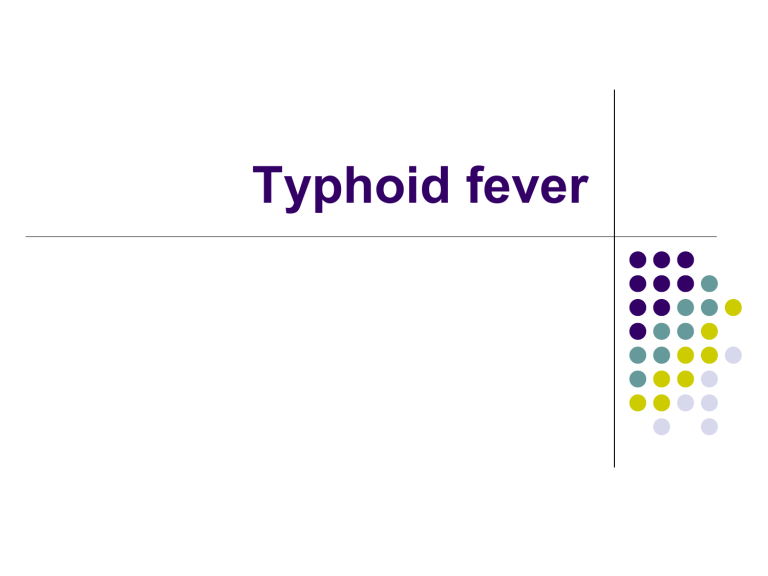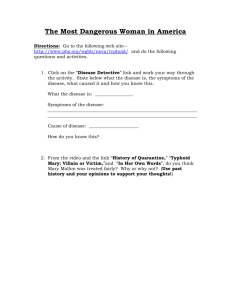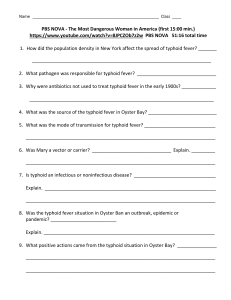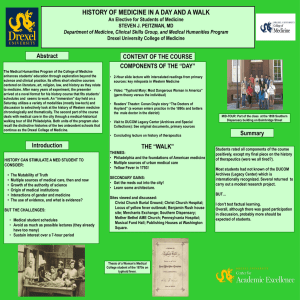
Typhoid fever introduction Caused by S. typhi. The disease found only in man. Enteric fever includes both typhoid & paratyphoid fevers. The disease may occurs sporadically, epidemically or endemically. Clinical features Problem statement Disease occurs where sanitation is poor Lowest incidence of typhoid in the world-UK. 6 lakhs deaths world wide Resistant strains caused outbreak in India 10% mortality if not treated. India Typhoid fever is endemic in India 1% of children of urban slum suffer from typhoid fever every year. 417 deaths in 2005. Epidemiological determinants pathogenesis Localization in spleen, liver, bone marrow, sec. bacterimia Circulation, primary bacterimia Lymphatic channel Entry in GIT Acute non-complicated disease Complicated disease GIT: occult blood in 10-20% of patients, and malena in up to 3%. Intestinal perforation has also been reported in up to 3% of hospitalized cases. CNS: Encephalopathy, Typhoid meningitis, encephalomyelitis, Guillain-Barré syndrome, cranial or peripheral neuritis and psychotic symptoms Others: Hepatitis, myocarditis, pneumonia, disseminated intravascular Laboratory diagnosis of typhoid 1)Microbiological procedure • Isolation of bacilli from blood, bone marrow & stools 2)Serological procedure • Felix-Widal test 3)New diagnostic tests • IDL Tubex, typhidot,typhidot-M, Treatment of uncomplicated typhoid Treatment of severe typhoid Oral drugs Control of typhoid fever Relapse 5-20% of typhoid fever cases that have apparently been treated successfully. A relapse is heralded by the return of fever soon after the completion of antibiotic treatment. The clinical manifestation is frequently milder than the initial illness. Cultures should be obtained and standard treatment should be administered. Vaccination Vi polysaccharide, is given in a single dose Protection begins seven days after injection, maximum protection being reached 28 days after injection when the highest antibody concentration is obtained. Protective efficacy was 72% one and half years after vaccination and was still 55% three years after a single dose. live oral vaccine Ty2la three doses two days apart on an empty stomach. Protection as from 10-14 days after the third dose. > 5 years. Antibiotics should be avoided for seven days before or after the immunization The future of typhoid Thank you



